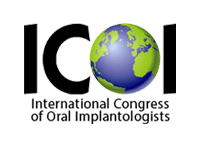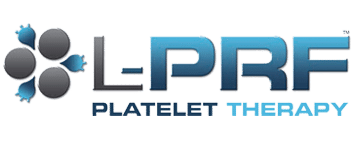Extractions
Are You Looking For Tooth Extractions Procedure?
In our office, we perform most extraction procedures from comfortably taking out baby teeth to surgically removing dead roots and impacted wisdom teeth. The procedure consists of numbing the site using a gel anesthetic first then local anesthetic and / or using a combination of relaxing gas, relaxing medications & local anesthetic.
Depending on your individual comfort needs you may choose to have light sedation or be ‘completely out’.

Once you are comfortable and the site is numb, leverage is applied to the tooth in a controlled manner. Depending on whether it’s a baby tooth or adult tooth or a broken root, the tooth may be sectioned into smaller pieces, and the site may be left open or closed (sutured). Extractions may be classified as simple or complex.
For impacted wisdom teeth, the surgery is similar with the addition of making a window in the gum tissue and bone over the tooth, possible sectioning into smaller pieces before leverage is applied to the tooth in a controlled manner, the tooth is removed and the window is closed.
A Special Note On Wisdom Teeth Extractions
When people reach their early teens or twenties, in some cases their jaws may not be large enough to allow the eruption of the teeth or other teeth may be in the way or so the teeth may become “stuck” or impacted. They come in crooked, they get decayed easily due to difficult access for cleaning and brushing, and sometimes they come in at such an angle that they push the adjacent teeth and / or they can develop a periodontal pocket and localized gum disease (pericoronitis) easily.
They can often become food traps and jeopardize the 2nd molar in front of the wisdom tooth. The accumulation of food and bacteria between these areas can lead to decay not only in the impacted wisdom teeth but also the teeth in front of them.


Pericoronitis is an infection of the soft tissue around the crown of a partially impacted tooth, usually lower wisdom teeth. Pericoronitis can arise when food gets trapped in the soft tissue around the wisdom tooth and the equilibrium between your body’s host defenses and the bacteria in your mouth are out of balance. This can cause swelling and pain, which can lead to further trauma and further swelling. Food trapped underneath the tissue can also lead to a severe infection.
There are more serious implications but the idea is to be informed and not alarmed. More serious implications occur when the sac that surrounds the impacted tooth fills with fluid and enlarges to form a cyst causing an enlargement that hollows out the jaw and results in permanent damage to the adjacent teeth, jawbone and nerves. Left untreated, but less common, a tumour may develop from the walls of these cysts and more complicated surgical procedure is required for the removal. Not all wisdom teeth cause problems. Sometimes Wisdom Teeth, or third molars, do not always erupt properly when they decide to make an appearance. It’s wise to get an early opinion from your dentist on getting wisdom teeth pulled before they become impacted, causing pain, swelling, infection, caries, and localized gum disease.
So what happens after extraction?
You will be given what are called “post-operative” instructions on how to manage the area after the extraction and also a prescription for an effective pain reliever and an antibiotic if an infection is involved.
There are many ways to deal with areas where teeth have been extracted. You may choose to replace them with bridges dentures or implants.
After the extraction, do not eat or drink anything hot or hard; although it is important to eat and drink to keep up your nutrition and hydration, stick to food and beverage items that are served cold. For most normal individuals ice cream, cold milk, juices, cold soup, plenty of water, fruit “smoothies” or blended vegetables are a great idea. Do not spit or rinse forcefully or suck through a straw for at least 24 hours after an extraction because the suction can dislodge the clot that begins the healing process.
Refrain from smoking, within the first 48-72 hours after a tooth has been extracted because smoking and alcohol can impede the healing process and cause a greater chance of developing Refrain from smoking, within the first 48-72 hours after a tooth has been extracted because smoking and alcohol can impede the healing process and cause a greater chance of developing a painful condition known as “dry socket”. Normally, a blood clot forms and healing takes place without a problem. If the blood clot is completely or partially lost, the bone is exposed, causing moderate to severe pain. For several days after the extraction, it is important to keep the area as clean as possible to prevent infection and promote healing. Do not brush on that particular site for 48 hours (but brushing other teeth in on that side is encouraged). After 24 hours, gentle salt – water or mouthwash rinses can be done after every meal and snack
If your dentist prescribed antibiotics due to the presence of an existing infection, you should carefully follow the instructions and finish the antibiotics — even if you start to feel better before the prescribed antibiotics are completely gone. Take the pain medication as required and use them responsibly as advised by your dentist and pharmacist. If you react severely to any medication you must seek emergency care. If you have problems with pain, bleeding, swelling, that is persistent and not getting better, you should contact your dentist. More helpful hints: Apply an ice pack against your face for 15 minutes and then remove it for 15 minutes. Repeat this protocol for several hours to reduce facial swelling. If some slight bleeding occurs, bite down on a gauze-covered wet tea bag.











Designed and Developed by Identity Namebrands Inc.
Home | Meet the Doctors | Reviews | Our Office | Promotions | Insurance & Financing | Contact Us | Office Policies © 2009 Vaughan Smiles.
MAIN NAVIGATION
© 2009 Vaughan Smiles.
